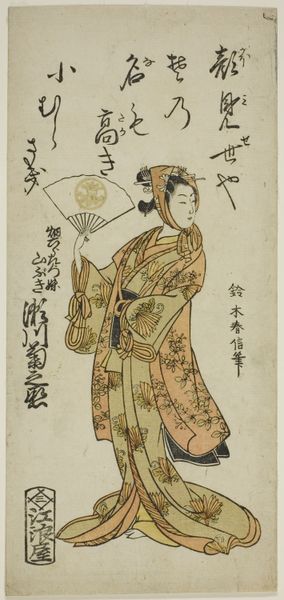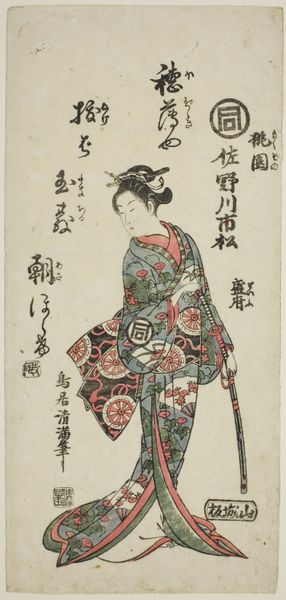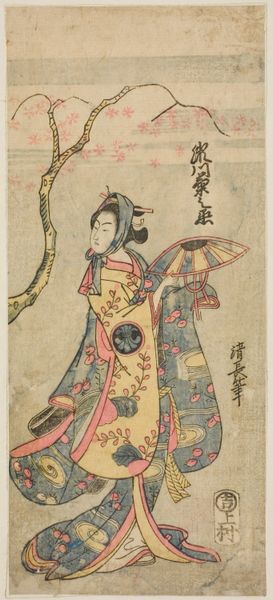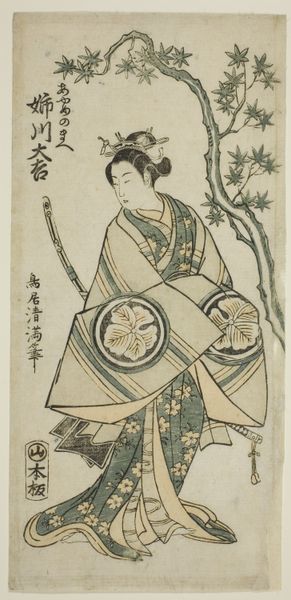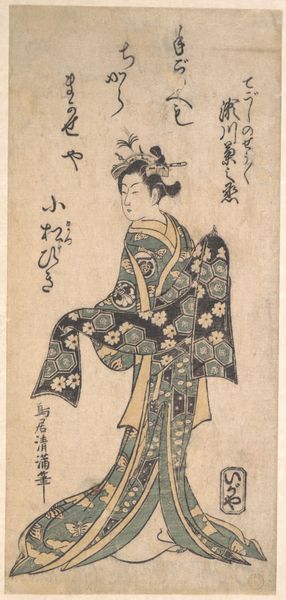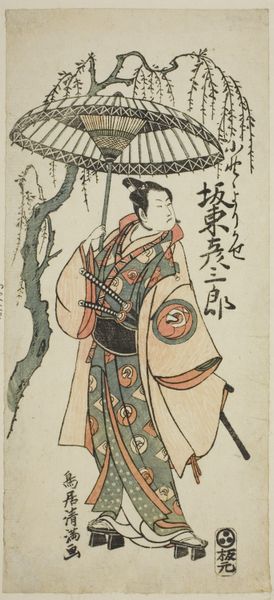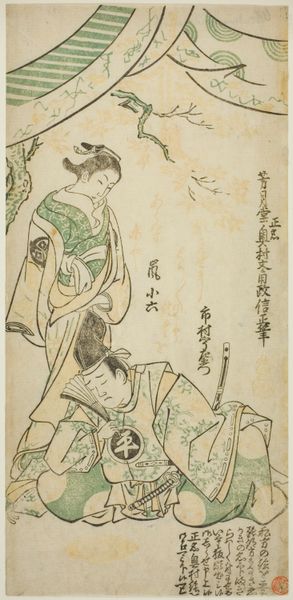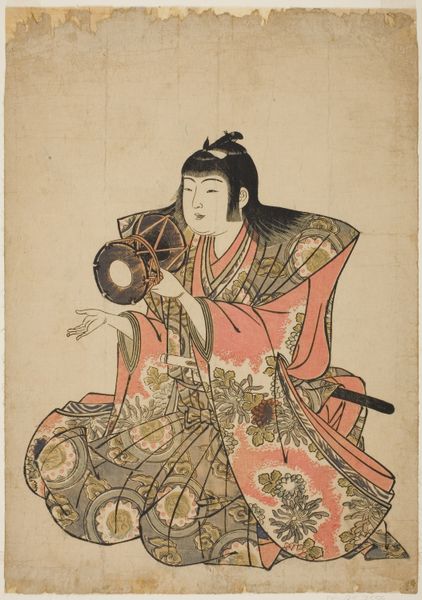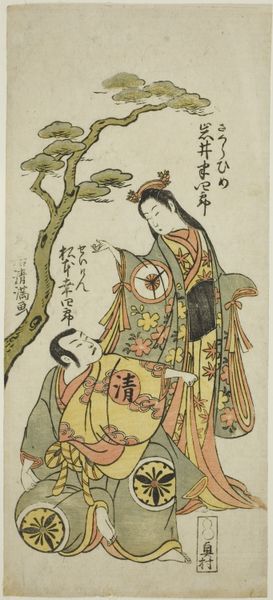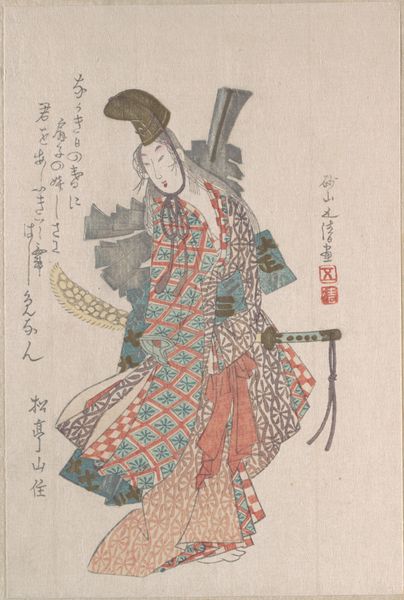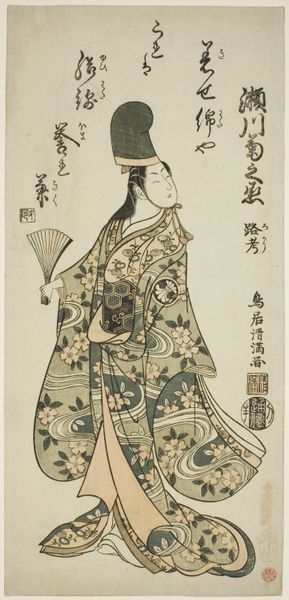
The Actor Ichimura Shichijuro (Uzaemon X) as Senzaimaru c. 1759
0:00
0:00
print, woodblock-print, woodcut
#
portrait
# print
#
asian-art
#
ukiyo-e
#
woodblock-print
#
woodcut
#
genre-painting
Copyright: Public Domain
Curator: Standing before us is Torii Kiyomitsu's woodblock print, created around 1759. It's entitled "The Actor Ichimura Shichijuro (Uzaemon X) as Senzaimaru," currently held at the Art Institute of Chicago. Editor: My immediate impression is one of understated elegance. There is a beautiful balance created through the colour scheme and the asymmetrical placement of the actor against the blossoming tree branch. It creates a serene atmosphere. Curator: Indeed. The composition is deliberately simple yet refined. Kiyomitsu employs subtle color gradations, what the Japanese call "bokashi," to achieve nuanced shading. The linearity of the figure set against the softer tones in the branch is key to creating an elegant visual experience. The focus is clearly on line and shape. Editor: Beyond the elegant lines, though, consider the Kabuki context. Ukiyo-e prints like this were popular ways to circulate images of famous actors. But this also reinforces Kabuki’s problematic gender politics. This print portrays Ichimura Shichijuro, playing the role of Senzaimaru, a male child role typically embodied by adult male actors as onnagata. How does this representation intersect with contemporary discourse around gender and performance? Curator: The layers of artifice are central. The male actor embodying a male child *is* Kabuki’s power—the tension between reality and performance, challenging what seems natural and fixed. Furthermore, the print is part of an industry and consumer culture. It would circulate an image, promote performances, solidify fame. Editor: That commercial aspect is critical. While appreciating the aesthetics, we cannot ignore the social dynamics—Kabuki's accessibility for some but exclusion of others, based on social class and gender. It demands we think critically about the power dynamics inherent in art and representation. Curator: A fair point. Yet it's Kiyomitsu’s ability to abstract and refine, that elevates a promotional image into a true work of art that transcends the simple capturing of an actor to portraying movement. It encourages you to go see the play. Editor: Absolutely. To fully appreciate this image is to reconcile the artist's undeniable skill, displayed in rendering an actor, while interrogating the socio-cultural factors that define the theater tradition.
Comments
No comments
Be the first to comment and join the conversation on the ultimate creative platform.
